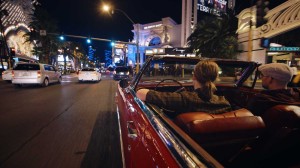
Blackmagic Design announced three Pocket Cinema Cameras are being used to shoot footage for Esquire Network’s Brew Dogs, including driving scenes and food and beer photography. Kelly Reese of Deluxe is grading the series using DaVinci Resolve.
Brew Dogs follows James Watt and Martin Dickie, owners of the U.K.’s fastest growing brewery, as they travel across America visiting different beer towns, celebrating distinctive craft beers and creating their own locally inspired drafts. Director and executive producer Jared Cotton, of Brew Dogs‘ production company Custom Redtail Partners, works closely with DP Todd Bell to create a documentary style show with a cinematic look.
“There is very little time to produce an insane amount of content, all while ensuring it has a cinematic aesthetic,” said Cotton. “Since the aesthetic is so important, and driving scenes are such a big part of each episode, we wanted to do more than suction cup cameras to the dash, while not fully rigging a car with large cameras. Once we saw what the Pocket Cinema Cameras were capable of in terms of small footprint and image quality, we were hooked. We use them in almost every single scene because we want the entire series to feel cinematic.”
“One of my favorite driving scenes was shot at night on the Las Vegas strip using the actual car from Fear and Loathing in Las Vegas. We couldn’t damage a piece of film history, but we still wanted to get a great scene,” said Bell. “We mounted the cross shooting Pocket Cinema Cameras inside the car, which was much safer and would have been impossible with our main unit cameras because of their size. It was one of our most visually stunning scenes of the season. The detail, dynamic range and skin tones from the Pocket Cinema Camera are really impressive.”
In addition to driving scenes, the Pocket Cinema Cameras are used to capture multiple angles and wide shots and are often mounted on main unit cameras to capture different shot sizes from the same perspective.
“The show is about the process of making artisan, hand-crafted beers, and the images should have that same love and attention to detail put into them,” said Bell. “I am blown away by the Pocket Cinema Camera’s dynamic range. The amount of detail we are able to hold in the highlights outside of car shots, while holding detail in the shadows within the car, is amazing. The sharpness is even better than I had imagined, and rigging with the cameras is really fun and rewarding.”
“Previously, rigging a vehicle could take three hours and multiple crew members, but now we are ready to go in under 30 minutes,” said Cotton. “The cameras also have a huge impact on product shots. We can leave our second unit DP, Jessica Fisher, at a location with a small lighting package and a Pocket Cinema Camera, not only saving time, but utilizing the camera’s amazing sensor to properly showcase the real star of the show, the beer.”
Shot in ProRes in Log to utilize the sensor’s entire dynamic range, colorist Reese benefits from having room to play with different looks during color grading with DaVinci Resolve.
“Jared and Todd are passionate about color correction and don’t want the typical over-saturated reality show look. It needs to be more natural, more filmic,” said Reese. “To help achieve this, they shoot in Log mode, which I’m very excited about as it allows me more range to work with and helps retain more highlight detail.”
“Because nearly all the footage is shot in Log, but from different cameras and under varying lighting conditions, I use color corrections before and after LUTs for maximum quality. I love that DaVinci Resolve allows LUTs to be applied on a node,” he continued. “For additional control of the gamma curve, I adjust the custom curves to get just the right amount of detail in the lower gamma and the upper gamma. In video color correction, it’s easy to fall into the trap of just adjusting the Lift, Gamma and Gain and to forget about the in-between areas. Custom curves are a good way to address that.”
“The bottom line is to apply organic looks, but with around 1,600 events per show, it has to be done quickly and efficiently. I use preset memories set for different looks and cameras, and I still have to modify the corrections for each shot, but they serve as great starting points,” Reese added. “Our online editor works in his bay while I’m color correcting in my bay, which also makes for an incredibly efficient workflow. When there are new or revised shots for the show, he passes them to me, and I drop them onto a new track in my timeline. Having multiple tracks in Resolve really helps me stay organized.”





